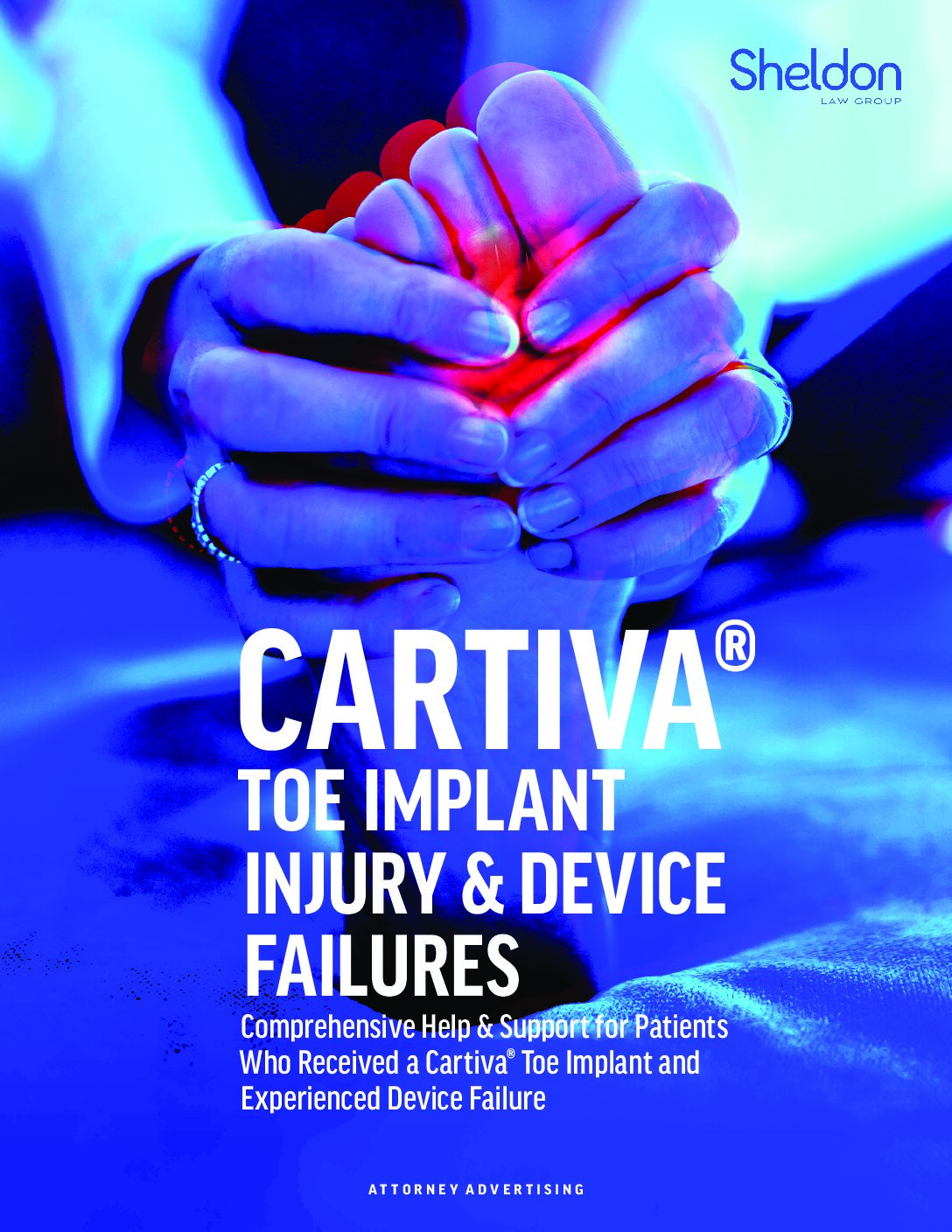Conservative Treatment Options for Cartiva Toe Implant Injuries
Cartiva toe implants are a relatively new surgical option for treating hallux rigidus, a painful degenerative condition of the big toe joint. While Cartiva implants have been shown to be effective in relieving pain and improving joint function in many patients, there is a growing number of reports of complications, including subsidence (where the implant sinks into the bone), pain, and stiffness.
If you are experiencing problems with your Cartiva toe implant, it is important to seek medical attention right away. In many cases, conservative treatment options can be effective in resolving the problem and avoiding the need for further surgery.
Get A 100% Free CASE EvaluationWhat are the conservative treatment options for Cartiva toe implant injuries?
There are a number of conservative treatment options that may be helpful for Cartiva toe implant injuries, depending on the severity of the problem. These options may include:
- Rest and activity modification: This is often the first line of treatment. Avoiding activities that put stress on the toe joint can help to reduce pain and inflammation.
- Ice and pain medication: Ice can help to reduce swelling and pain. Over-the-counter pain medication may also be helpful.
- Physical therapy: Physical therapy can help to improve range of motion, strength, and flexibility in the toe.
- Bracing or splinting: A brace or splint can help to immobilize the toe joint and reduce pain.
- Injections: In some cases, injections of corticosteroids or other medications may be helpful to reduce inflammation and pain.
What are the benefits of conservative treatment?
Conservative treatment options offer several benefits over surgery, including:
- They are less invasive and less risky than surgery.
- They are often less expensive than surgery.
- They can be effective in relieving pain and improving function.
- They may help to avoid the need for further surgery in the future.
When is surgery necessary?
In some cases, conservative treatment options may not be effective in resolving the problem. If you continue to experience pain, stiffness, or other problems with your Cartiva toe implant, surgery may be necessary. Surgery may also be necessary if the implant has become damaged, failed, or has broken.
What are the risks of surgery?
As with any surgery, there are risks associated with surgery to remove or replace a Cartiva toe implant. These risks include infection, bleeding, nerve damage, and complex regional pain syndrome.
It is important to discuss the risks and benefits of both conservative and surgical treatment options with your doctor to decide the best course of treatment for you.
In addition to the treatment options mentioned above, there are a few other things you can do to help manage your Cartiva toe implant injury:
- Maintain a healthy weight. Excess weight can put added stress on the toe joint.
- Wear supportive shoes. Choose shoes that fit well and supply good arch support.
- Avoid activities that put stress on the toe joint. This includes activities such as running, jumping, and high-impact sports.
If you are experiencing problems with your Cartiva toe implant, don’t hesitate to seek medical attention. Early diagnosis and treatment can help to prevent further complications and improve your chances of a successful outcome.
If Your Cartiva Toe Implant Failed Prematurely, We Can Help.
If you have suffered from complications after receiving a Cartiva Toe Implant, contact us now. We are fighting to protect the rights of patients allegedly injured by Cartiva toe implants and hold the device makers fully accountable for putting profits above the health and well-being of patients.
Patients who received a Cartiva toe implant and were forced to have revision surgery to remove or replace the device, may be entitled to significant financial compensation. Contact us now to learn more about your rights and whether you are entitled to compensation.

